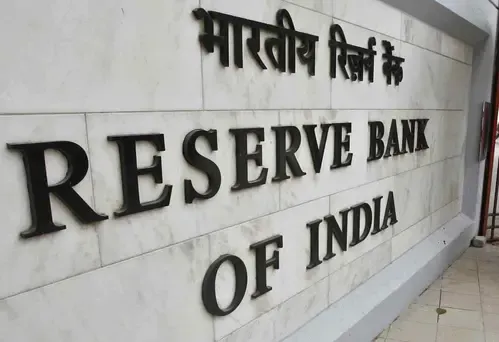Is RBI Set to Cut Repo Rate by 25 Basis Points in Q4 2025?

Synopsis
Key Takeaways
- RBI may cut repo rate by 25 bps in Q4 2025.
- Current repo rate is 5.50 percent.
- Inflation at an eight-year low of 1.6 percent YoY.
- Vegetable prices have unexpectedly risen.
- Energy prices have decreased significantly.
New Delhi, Aug 13 (NationPress) The Reserve Bank of India (RBI) is projected to initiate a 25 basis point reduction in the repo rate during the fourth quarter of this year, contingent upon the continuation of moderate high-frequency data observed in June, according to a report released on Wednesday.
Despite the RBI's robust one-year-ahead growth and inflation projections, which have led some market analysts to speculate that the central bank might be reluctant to implement further easing measures, there are indications that it may adjust its forecast and proceed with rate cuts, as detailed in the HSBC Global Investment Research report.
"Should high-frequency activity indicators remain subdued in the upcoming months, the RBI is likely to revise its growth projections downward. A 25 bps repo rate cut is anticipated in Q4, lowering the repo rate to 5.25 percent," the report stated.
During its August meeting, the RBI held its policy rate steady at 5.50 percent, following significant easing in the preceding session.
Inflation was reported at 1.6 percent year-on-year; while food prices showed a slight increase, energy prices declined, and core inflation decreased, resulting in an eight-year low print. The sequential momentum remained subdued at 0.1 percent, with an average sequential momentum of flat over the past six months.
The CPI inflation is projected to average 3.2 percent in FY26, supported by favorable base effects, well-stocked granaries, healthy kharif crop sowing, and stable commodity prices.
Vegetable prices, which had been experiencing disinflation for six months, saw a sharper-than-expected increase, contributing to the unexpected print today, the report noted.
Headline inflation, excluding vegetables, eased to 3.6 percent year-on-year, down from 3.8 percent previously.
Food prices exited deflation after six months, rising by 0.2 percent. Heavyweight cereals, accounting for 9.7 percent weight, continued to decline for the second consecutive month.
"The decreases in the prices of pulses, sugar, and fruits somewhat counterbalanced the increases in the prices of edible oil, eggs, meat, fish, and vegetables. The annual print remained negative, dragging down the headline figure to an eight-year low," the report added.
The energy index saw a significant drop, declining by 0.7 percent on a seasonally adjusted monthly basis, which includes petrol, diesel, fuel, and light. This sharp sequential decline can be attributed to the easing of electricity and LPG prices, as stated in the report.
–IANS
aar/na









